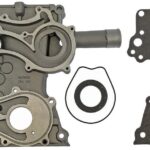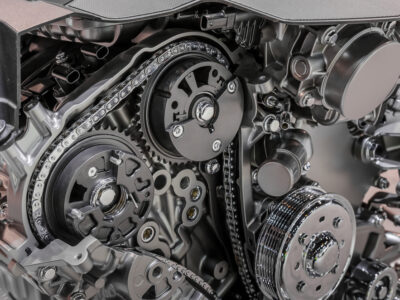
Are Audi A1 Expensive to Maintain?

- Understanding the Audi A1’s Reputation for Running Costs
- The Audi A1 Philosophy: Premium in a Compact Shell
- Annual Maintenance Expectations
- Service Intervals and Their Cost Impact
- Engine Options and Their Maintenance Differences
- Common Maintenance Costs Explained
- Comparing the A1 to Its Rivals
- Insurance Costs and Premium Positioning
- Fuel Costs and Real-World MPG
- Reliability Factors That Influence Cost
- DIY Maintenance Opportunities
- Main Dealer vs Independent Costs
- Depreciation and Its Hidden Maintenance Impact
- The Long-Term Ownership Sweet Spot
- Our Verdict: Are Audi A1 Expensive to Maintain?
- Conclusion
- FAQs
Understanding the Audi A1’s Reputation for Running Costs
When we talk about the Audi A1, we're referring to a pint-sized premium hatch that sits in a class of its own. It wears the Audi badge proudly, but it doesn’t carry the same wallet-crunching reputation as its bigger siblings. Yet, many drivers still wonder: Are Audi A1 expensive to maintain?
We break this down piece by piece—not with generic assumptions, but with practical ownership insight, everyday running numbers, and the reality behind premium-badge upkeep.
The A1 is engineered like an Audi is meant to be: tight build quality, refined mechanicals, and interiors that feel carved from a single piece. This premium mindset brings benefits—longevity, robust components, fewer rattles—but it can also mean costlier parts and labour than a typical supermini.
Still, that doesn’t automatically make the A1 expensive. We dig deeper.
Annual Maintenance Expectations
Typical Yearly Ownership Costs
For the average owner, the annual maintenance bill tends to fall between modest and mid-range depending on mileage and engine type. Let’s map it out:
- Routine servicing: £150–£350 per year
- Wear-and-tear items: £120–£600 depending on the component
- Unexpected repairs: £50–£1,000 depending on severity
- Tyres: £60–£120 each for mid-range brands
Why Costs Vary So Widely
Mileage, driving habits, climate, and adherence to service schedules all play roles. The A1’s turbocharged engines demand high-quality oil and correct intervals to stay healthy.
Service Intervals and Their Cost Impact
Audi typically recommends flexible or fixed intervals:
- Fixed servicing: Every 10,000 miles or 12 months
- Flexible servicing: Up to 18,000 miles depending on usage
Flexible servicing can look cheaper on paper, but over time we’ve found that sticking to fixed intervals helps prevent premature wear—saving money in the long run.
Engine Options and Their Maintenance Differences
Petrol vs Diesel
The A1’s petrol engines generally cost less to maintain day-to-day. Diesels, meanwhile, offer better fuel economy but introduce complexity such as DPF maintenance.
Turbocharged Complexity
All modern A1 engines are turbocharged, which means:
- Better efficiency
- Better low-end power
- More components that require care
Turbo failures are rare when serviced properly, but neglect can be punishing.
Common Maintenance Costs Explained
Oil Changes
Expect £100–£180 using quality synthetic oil. Cheaper oils compromise longevity.
Brake Servicing
- Pads: £90–£160
- Discs + pads: £200–£350
The A1’s braking system is robust, meaning replacement intervals are generally good.
Battery Replacement
A standard battery costs around £100–£160, while an AGM battery (commonly used for start-stop engines) costs £150–£220.
You may be interested in reading DIY Guide: Replacing the Clutch in a Fiat 500
DIY Guide: Replacing the Clutch in a Fiat 500Timing Belt or Timing Chain
Depending on the engine:
- Timing belt models: £350–£550
- Timing chain models: Rarely replaced, but failures are costly if neglected
Suspension Components
Small hatch, but premium parts:
- Drop links: £40–£90
- Shocks: £120–£200 each
- Bushes: £80–£150
Comparing the A1 to Its Rivals
Versus MINI Cooper
MINI tends to carry higher labour costs and pricier parts. The A1 often wins on long-term reliability.
Versus Fiat 500
The Fiat is cheaper for parts and labour, but lacks the refinement and longevity. A1 owners typically recoup the spend through fewer repairs.
Versus Peugeot 208
The 208 may be cheaper initially, but the A1’s build quality generally results in lower unexpected repair rates.
Despite its badge, the Audi A1 often sits in insurance groups 9–19—lower than expected for a premium brand. This keeps annual insurance manageable for most drivers.
Fuel Costs and Real-World MPG
Efficiency Snapshot
- 1.0 TFSI: ~45–55 mpg
- 1.4 TFSI: ~40–50 mpg
- 1.6 TDI: ~60–70 mpg
These figures keep ongoing running costs low, particularly compared to bigger Audi models.
Reliability Factors That Influence Cost
The A1’s reliability record is generally excellent. High-quality components reduce the frequency of repairs and help stabilise annual ownership spending.
Known Issues (Rare But Notable)
- Coil pack issues on older 1.4 TFSI models
- Occasional water pump leaks
- DPF blockages on low-mileage diesels
These aren’t deal-breakers, but they add nuance to long-term cost expectations.
DIY Maintenance Opportunities
You can save significantly by handling simple tasks yourself:
- Air filter changes
- Cabin filter replacements
- Wiper blade upgrades
- Basic diagnostics using an OBD2 scanner
Premium doesn’t mean untouchable. The A1 is straightforward to work on for most simple tasks.
Main Dealer vs Independent Costs
Main Dealer
Pros: Genuine parts, software expertise
Cons: Higher hourly labour rates (£120–£180/hr)
Independent Specialist
Pros: Lower labour (£50–£80/hr), personalised service
Cons: Not all have Audi-specific tools
 DIY Guide: Replacing the Clutch in a Fiat 500
DIY Guide: Replacing the Clutch in a Fiat 500 How to Change the Oil and Oil Filter in Your Fiat 500
How to Change the Oil and Oil Filter in Your Fiat 500Most A1 owners blend the two: dealer servicing for warranty-critical work, specialists for everything else.
A well-maintained Audi A1 depreciates more gently than rivals. Buyers trust the brand, meaning service history has extra value—and keeping on top of maintenance returns value at resale time.
The Long-Term Ownership Sweet Spot
The A1 strikes a balance: premium driving feel without premium-car horror bills. That’s why many owners stick with them long-term. Clean design, efficient engines, and stable costs make it a compelling daily driver.
Real-World Owner Feedback
Most owners report:
- Low unexpected failures
- Excellent fuel economy
- Predictable servicing costs
- Strong resale value
The A1 rarely surprises owners with dramatic bills—provided maintenance is done on time.
Our Verdict: Are Audi A1 Expensive to Maintain?
In straightforward terms: No, the Audi A1 is not expensive to maintain compared to other premium-badge cars. It sits slightly above mainstream hatchbacks but below the maintenance costs of MINI, BMW, and other premium marques.
The A1’s dependable engineering, good reliability, and long component lifespan make it a financially sensible choice—premium, but not punishing.
Conclusion
Maintaining an Audi A1 isn’t about draining your wallet—it’s about understanding your car, keeping to sensible service intervals, and choosing the right workshop. With proper care, the A1 delivers years of dependable, efficient, and enjoyable ownership without the premium-brand price shock.
FAQs
1. Is the Audi A1 more expensive to maintain than a MINI?
Generally, no. MINIs often have pricier labour and more frequent repairs.
2. Does the Audi A1 have costly repairs?
Only if maintenance is neglected. Regular servicing keeps repair bills predictable.
3. Are diesel Audi A1 models more expensive to maintain?
They can be, due to DPF systems. Best for long-distance drivers.
4. How much is a typical Audi A1 annual service?
Usually between £150 and £350 depending on the service type.
5. Is the Audi A1 reliable long-term?
Yes—one of the more reliable premium hatchbacks on the market, with strong build quality.
You may be interested in reading DIY Guide: Replacing the Clutch in a Fiat 500
DIY Guide: Replacing the Clutch in a Fiat 500 How to Change the Oil and Oil Filter in Your Fiat 500
How to Change the Oil and Oil Filter in Your Fiat 500 Replacing the Timing Cover Seal on a Fiat 500 TwinAir Engine
Replacing the Timing Cover Seal on a Fiat 500 TwinAir EngineIf you want to know other articles similar to Are Audi A1 Expensive to Maintain? you can visit the category Maintenance.
Deja una respuesta






More content of your interest